by F. P. Zantis
Three-phase motors, particularly asynchronous types, are very reliable and consequently popular prime movers. A drawback of these engines is, however, their fixed speed of rotation which depends on the frequency of the applied voltage. This article describes means of varying that frequency and thus controlling the speed of the motor over a wide range.

Fig. 1. Schematic representation of how a 3-phase motor may be operated
from a single-phase sup ply under the control of a frequency changer.

Fig. 2. Block diagram of a basic frequency changer.

Fig. 3. Basic circuit of the power section of a small frequency changer.
Until not so long ago, the only way of varying the frequency of the voltage driving a three-phase motor was the use of a rotary converter. However, the advent of power semiconductors has made possible the development of static frequency changers that convert an alternating voltage of a given frequency into one of a different frequency.
These devices may also change the number of phases, for instance, single-phase current into three-phase current.
Apart from their application with prime movers, such frequency changers are also very useful in standby and emergency power supplies and in the control circuit of oscillators. In these applications, the widely varying direct output voltage of a battery is converted to an alternating voltage of steady level and frequency.
A frequency changer to control the speed of a three-phase motor must have an output voltage whose level and frequency are both variable. A proportional change in the level and frequency of the voltage applied to the motor enables the speed of rotation of the motor to be varied at constant moment as is shown schematically in Fig. I. Speed control offers many advantages, such as a saving in energy, reduced maintenance costs, and optimization or greater flexibility of operation.
Frequency changers
All frequency changers work on the same principle: the drive voltage (normally 240 V or 415 V, 50 Hz mains) is rectified, smoothed (filtered) and applied to the motor via an inverter (= dc-to-ac converter) as shown schematically in Fig. 2.
The construction of the various sections depends on the type of frequency changer.
For instance, the power section of a small frequency changer is shown (greatly simplified) in Fig.3.
The rectifier is normally a conventional bridge type. The voltage source is loaded by the required current only, independent of the motor rating. That results in a good power factor which is virtually constant (typically, cos (1) = 0.97) over the entire load and speed ranges.
The smoothing circuit is normally an LC low-pass filter, whose inductance protects the mains against transients. The large values of capacitance required with high loads are obtained by series and parallel connection of a number of high-voltage electrolytic capacitors as shown in Fig. 4.
Matched resistors ensure correct division of the voltage.
The inverter consists of three pairs of transistors that are arranged in a star configuration. The three motor phases are connected cyclically at 120° intervals to, respectively, the positive and negative terminal of the smoothing filter, which results in a rotating field being induced in the motor. Appropriate control of the inverter enables the smooth, precise control of the output frequency. In general, three-phase motors may be operated at up to twice their rated speed.
This means that, for example, a four-pole three-phase motor may be operated at up to 3000 rev/min. Such control can not, how ever, be achieved by varying only the frequency.
To obtain a constant moment, the magnetic flux in the stator of the motor must be related to the set frequency. To that end, the motor voltage must be increased or reduced, as the case may be, in direct proportion to the frequency. When the frequency is higher than the rated frequency of the motor (50 Hz), the voltage can not rise, since the frequency changer can not generate a potential that is higher than the applied voltage.

Fig. 4. The filter capacitance may consist of series and parallel arrangements
of small capacitors.
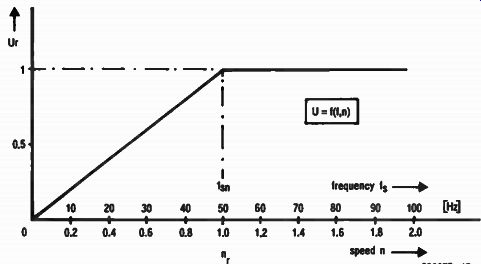
Fig. 5. Characteristic curve of the motor voltage vs rotational speed vs
source frequency.

Fig. 6. Moment characteristic.

Fig. 7. Two possible designs for use with three-phase generators: both
generate three signals, the phase of each of which is shifted 120 with respect
to the other two.
This results in a reduction of the magnetic flux and thus of the moment. Operation above the rated frequency is thus not possible at the rated moment.
The basic relation between supply frequency, f s, the ratio of actual motor speed to rated motor speed, n/nr , and the ratio of the actual motor voltage to the rated motor voltage, U/Ur , is given by the characteristic in Fig. 5, while the relation between n/n, and the ratio of the actual moment and rated moment, M/Mr , is shown in Fig. 6.
The power section of the inverter is pre ceded by a control stage which, among others, contains the electronics for the generation of the variable-frequency rotating field. Two basic circuits for the generation of this field are shown in Fig. 7: both are digital phase advancers.
Figure 7a provides a pre-settable frequency to control a ring counter. The outputs of this counter are connected to a binary coded-decimal (BcD) decoder. The signals that are shifted by 120° with respect to one another, and which are required for driving the power semiconductors, appear at the out put of the three bistables.
The circuit in Fig. 7b is rather simpler in that it does not include a BCD decoder. The AND gate obviates any unacceptable state, but has no other effect on the operation of the phase advancer.
For a rotating field frequency of 50 Hz, the clock of both designs must be 300 Hz.
Some semiconductor manufacturers provide special ICs for the generation of the rotating field, but in state-of-the-art frequency changers microprocessors are used for this purpose.
As already stated, the output voltage must rise in direct proportion to the frequency. There are a number of ways in which the output voltage may be varied: the two most important of these, pulse-amplitude modulation -- PAM; and pulse-duration modulation -- PDm, will be described below.
Pulse-amplitude modulation In the PAM method of varying the output voltage, a chopper (electronic switch), following the smoothing filter, opens and closes at a rate determined by the control stage (see Fig. 8). This results in a variable direct voltage that is in direct proportion to the duty factor of the control signal.
The level of the voltage can be adjusted in proportion to the frequency in a manner which ensures that the ratio of output voltage to output frequency remains constant. For a 400 V motor, this ratio must be 400 V:50 Hz =- 8 V per Hz.
In the type of frequency changer described here, the output voltage is built up from six pulses per period (see Fig. 9). That voltage is not sinusoidal: it contains, apart from the fundamental frequency component a number of harmonics of which the 5th, 7th, 11th and 13th are the most important. These harmonics cause the motor to produce spurious moments and result in additional losses in energy.
Because of the inductance of the stator, the current through the motor is rather more sinusoidal than the voltage. The waveform becomes better when the voltage is built up from a larger number of pulses per period. For instance, when there are 18 pulses per period, the output voltage and current are shaped as shown in Figure 10. The amplitude of the harmonics is then much smaller so that the motor runs rather more smoothly.
The PAM frequency changer may also be designed with a controlled rectifier instead of a chopper as shown in Fig. 11. The amplitude of the voltage across the smoothing filter can then be varied by controlling the phase angle. The main drawback of this method is the feedback on to the source (mains), which manifests itself in a poor power factor and relatively high-level harmonics. These harmonics must be filtered out, otherwise the user might run into trouble with the relevant electricity supply authority.
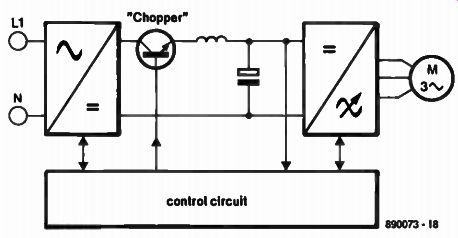
Fig. 8. Frequency changer using pulse-amplitude modulation.
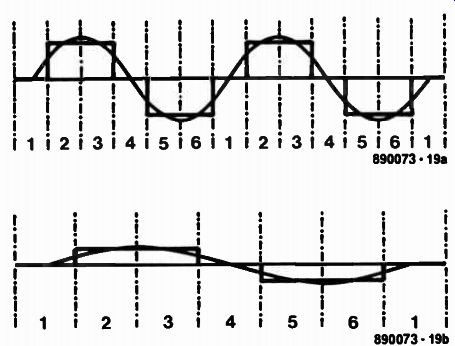
Fig. 9. Output voltage of a PAM frequency changer built up from 6 pulses
per period: (a) at maximum source voltage and frequency and (b) at half
the maximum source voltage and frequency.

Fig. 10. Output voltage of a PAM frequency changer built up from 18 pulses
per period (a) and corresponding current (b). Fig. 11. The PAM frequency
changer with controlled rectifier.

Fig. 12. Output voltage of a PDM frequency changer: (a) maximum source
voltage and frequency; (b) half the maximum source voltage and frequency.
Pulse-duration modulation
Frequency changers using pulse-duration modulation have no chopper or controlled rectifier, so that the voltage across the smoothing filter assumes a fairly constant value that is dependent only on the supply voltage and the load.
The level and shape of the output voltage are determined solely by the width of the output pulses of the inverter.
The basis of this type of modulation is a comparison between a triangular and a sinusoidal signal. The frequency of the triangular signal is much higher than that of the sine wave (see Fig. 12). The resulting pulse train is the control instrument.
As before, because of the integrating action of the stator inductance, the current is sinusoidal for all practical purposes.
The design of the control circuitry is much simplified by the availability of special ICs that contain the comparator, sine wave generator and triangular-wave generator. Again, the design may also be based on the use of microprocessors.
The frequency of the sinusoidal voltage determines the output frequency of the frequency changer and thus the speed of the motor. When the frequency of the triangular signal is constant, pulses are generated that depend on the output frequency. At low out put frequencies, the number of pulses per period is relatively high, which results in a near-sinusoidal current through the motor.
When the output frequency is high, the waveform of the current deteriorates.
High-voltage switching transistors may be used in the power section of inverters as long as the output power does not exceed 50 kVA. Modules are available from some manufacturers that contain all six transistors required for a three-phase bridge circuit.
When the output power exceeds 50 kVA, thyristors must be used. Figure 13 shows one phase circuit of the power section of a thyristors-based inverter; the other two circuits are identical. Since thyristors can not be switched off in a simple manner, some additional components are required.
Each phase circuit needs four thyristors, of which two, Th1 and Th2, switch the current through the motor. The other two, Th3 and Th4, are required for the so-called commutation process, which is described below.
Commutation
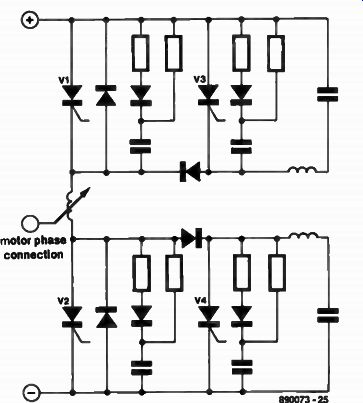
Fig. 13. Diagram of one phase circuit of a frequency changer based on thyristors,
also called voltage-based frequency changer.
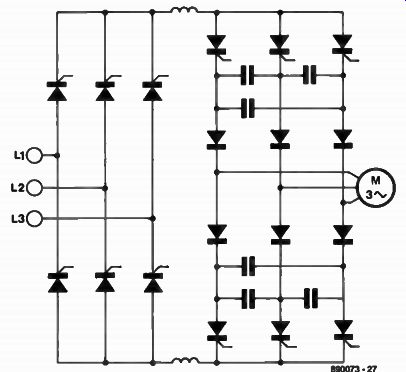
Fig. 15. Circuit diagram of the power section of a current-based frequency
changer.
During forward conduction all the junctions of a thyristor are forward biased. To be able to turn off the device, the charge carriers must be removed and this is usually done by applying a reverse voltage across the thyristor, a process known as commutation. The process will be described with the aid of the circuit shown in Fig.14, which is part of that in Fig. 13.
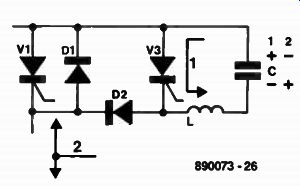
Fig. 14. Simplified commutation circuit (detail of Figure 13).
The simplified circuit in Fig. 14 consists of two thyristors, a commutation LC network, which forms a series resonant circuit, and two diodes.
In order to turn off Th1, Th3 must be fired. At first, capacitor C is charged as shown (1). This results in a sinusoidal cur rent in the LC circuit. The first half period of that current flows through Th3, which then fires. When the current reaches a zero crossing, Th3 is turned off and the polarity of C is reversed (2). The next half period of the current flows through the diode and Th1 or the motor. For a brief instant, the motor current flows through the LC circuit: no cur rent then flows through Th1 and it turns off.
The remaining components in Fig. 14 protect the power semiconductors or are needed to prepare the commutation process.
The operation of this type of inverter depends on the voltage across the motor and the inverter is, therefore, called a voltage inverter. The level of the current through the motor depends entirely on the load on the motor.
It is also possible to base the frequency changer on the processing of the current, in which case the load on the motor determines the voltage across the motor. This type of frequency changer is called a current-based frequency changer
The design of the power section of a current-based frequency changer is shown, greatly simplified, in Fig. 15. Note that the smoothing filter does not contain a capacitor. The controlled rectifier at the input determines the r.m.s. value of the current through the smoothing filter. The inductor smoothes the direct current. Before it is fed to the stators of the motor, the current through the filter is divided in the inverter in a manner to ensure that a rotating field is induced. The current through, and the voltage across, the motor are shown in Fig. 16.
Note that in this type of frequency changer the current waveform is rectangular, whereas the voltage is near-sinusoidal.
Because of the controlled rectifier, the power factor at the source end of a current based frequency changer is not constant, but varies in accordance with the load. Further more, this type of frequency changer can not be used in parallel operation of motors, be cause the commutation capacitor in the inverter must be adapted to the rating of the motor.
Since in a current-based frequency changer the motor is part of the commutation network, such a frequency changer, in contrast to a voltage-based changer, can not be operated without the motor. On the other hand, the design of the inverter for a current-based frequency changer is much simpler than that for a voltage-based model. Furthermore, the commutation process is simply effected by the inverter and the rotating field of the motor without the need of additional components.
However, the great advantage of a current-based frequency changer is not its simpler design, but the possibility of feeding back the brake horsepower into the source without the need of additional components.
When the motor thus operates as a generator, the current through it is reversed and fed to the controlled rectifier via the smoothing filter.
The rectifier then functions as an inverter, which returns the energy to the source.
Efficiency The efficiency of the modern frequency changers discussed in this article is pleasantly high: depending on the design and technology employed, it lies somewhere between 93% and 97%. Typical efficiency curves of a voltage-based frequency changer operating with various loads are given in Fig. 17.
The overall dissipation includes losses in diodes, thyristors, inductors and control sections. Most of the dissipation, however, occurs in the commutation process. The over all dissipation is, therefore, highly dependent on the number of commutations per unit time. Thus, al though high pulse rates reduce the harmonic content, they increase the dissipation.
At frequencies below 10 Hz, the potential drop across the resistance of the motor winding reduces the flux and the moment. In these circumstances, this may be compensated by a higher than proportional rise in the output voltage as indicated by the characteristic in Fig. 18.
Miscellaneous

Fig. 16. Current through, and voltage across, a three-phase motor operated
with the aid of a current-based frequency changer.
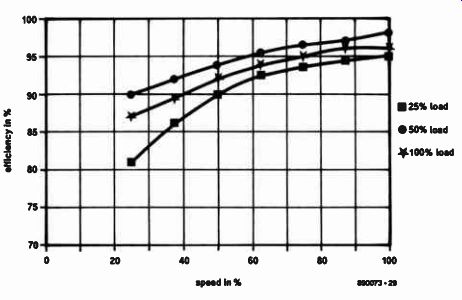
Fig. 17. Typical efficiency curves of a voltage-based frequency changer.

Fig. 18. Output voltage vs frequency characteristic when the voltage is
raised at low frequencies.
When adapting your own requirements to the observations and discussions in this article, bear in mind that a number of components are shown for very large loads. In no circumstances, for instance, must the large capacitors shown in the smoothing filters be connected directly across the mains or other high-voltage source since at the moment of first switch-on they form a short circuit.
Such high-value capacitors must be charged via a suitable resistor. Only when they have been charged can they be connected to the input source and even then via a suitable protection circuit.
The potential across the smoothing filter rises to the peak value of the source voltage.
The capacitor(s) will retain a lethal charge even after the source has been disconnected.
The commutation process causes high voltage peaks, which should be borne in mind during test and measurement.
As a rule, all components in the power section carry a potential to earth. Only very small frequency changers can be isolated from the source (mains) by a suitable trans former. Again, this should be borne in mind during test and measurement. Also, test instruments whose 'zero potential' is connected to their case (as in a number of oscilloscopes) must be connected to the mains via an isolating transformer. There exists then, however, a potential between the case and earth. BE WARNED that in certain circumstances it may be dangerous to touch the case.
The voltage peaks in the inverter may reach values that exceed the isolation breakdown voltage of the test instrument. It is therefore important that for each instrument at least the maximum input voltage and the highest permissible voltage with respect to earth or to case are known and strictly observed. Furthermore, in order to judge whether a given instrument is suitable for certain measurements, its principle of operation must be known. This is particularly so when alternating voltages and currents are measured whose wave form does not match that with which the instrument has been calibrated a FURTHER READING:
Power Electronics Handbook by F.F. Mazda ISBN 0 408 03004 6 Butterworth Scientific Ltd Westbury House, Bury Street GUILDFORD GU2 5BH England (Elektor Electronics June 1990)
Power Electronics by M.H. Rashid ISBN 0 13 686619 0 Prentice-Hall 66 Wood End Lane HEMEL HEMPSTEAD HP2 4RG England (Elektor Electronics October 1988)
Electric Machinery by Peter F. Ryff, ISBN 0 13 248691 1 Prentice-Hall Wood End Lane HEMEL HEMPSTEAD HP2 4RG England (Elektor Electronics January 1989)
Solving Problems in Electrical Power and Power Electronics by H.F.G. Gwyther
ISBN 0 582 28644 I Longman Scientific & Technical Longman House Burnt Mill HARLOW CM20 2JE England (Elektor Electronics March 1989)
Also see: Negative Resistance